After getting a new carry permit, people are generally confused about how to carry it. Carrying a firearm comes with responsibilities. You cannot keep it loosely in your pocket or carry it around in your hands. That’s why it is imperative to select a Gun Holster. The right cover maintains stability, security, and easy accessibility for your pistol.
This know-how blog takes you through a detailed overview of a holster and its importance. We will also share different types of gun holsters and how to choose the right one for yourself.
What Is a Holster and Why Does It Matter?
A firearm is as safe and dependable as the system that holds it. Still, many pistol owners spend hours comparing the calibres, and a mere few seconds in choosing a holster. However, the cover is more than a fashion accessory. It’s a protective layer between your body and a loaded weapon. What you choose determines if your gun is safe, comfortable, and succeeds in a real-world situation.
Gun Holster: An Overview
A holster is a cover that holds your gun and is commonly worn on a belt or shoulder strap. It restricts the undesired movement of your weapon and keeps it in a location from which you can easily withdraw. Since this gun cover is used for retention and easy access, you must select the most comfortable one for yourself.
Functions of a Gun Holster
Security and Availability: There always needs to be a balance between safety and accessibility, especially when using a defensive weapon. That’s because a delay in access or loss/damage to the pistol can leave you unprotected. A holster’s main purpose is to ensure that your weapon is safeguarded and always a second away from reach.
Trigger Coverage: Most firearms come with a round chamber for immediate availability. However, considered risky by some, a proper holster blocks trigger access and mitigates that risk. Most covers are designed with a rigid material to prevent trigger manipulation.
Comfortable Wear: No gun owner wants to keep the pistol in hand. That’s where a holster plays an important role, by ensuring a secure fit on your body. It keeps the pistol close while keeping your hands free. Some holsters are attached to the waistband or belt, while others are on the shoulder strap. There are a few covers that fit inside the pocket, providing protection and stability to regular users.
Overview of Major Holster Types
Not every holster fits all guns. They are specifically built for different weapons, and according to your requirements. Here are the major gun holster options for your consideration:
1911 Holster — For Iconic Pistols
A full-size 1911 is an iconic pistol, preferred by law enforcement and military personnel. For such weapons, a 1911 Holster is specially designed. The carrying case ensures secure retention to prevent accidental movement or loss during activity. It also enables quick access to the gun and comes in various types. The right holster depends on your convenience and requirements. Explore 1911 holsters to invest in the one that suits you.
OWB Holster — Outside the Waistband
An OWB gun holster is meant for open carry purposes. It keeps your pistol outside your pants, providing better comfort and easier accessibility. The cover is designed in such a way that you can draw your weapon naturally within seconds. One of the best parts about an OWB is its strong retention mechanisms, which keep the firearm firm even during rigorous movement. Learn more about OWB Holsters and make the right decision.
IWB Holster — Inside the Waistband
An IWB holster is the most used holster, perfect for everyday weapons. It attaches to the inner side of the waistbelt and completely hides your gun. Also known as the appendix holster, most of these covers are adjusted at the 1 or 3 o’clock position on your body. Such covers are known for their retention, easy accessibility, and low-profile maintenance.
Concealed Carry Holsters — For Discreet Defense
A Concealed gun holster, as the name suggests, is specifically designed to carry your weapon discreetly. It keeps the handgun hidden under the clothing and is suitable for those who require self-defence. There’s a retention system that makes sure the gun doesn’t accidentally fall out. It also enables easy access and is available in various positions, including IWB and appendix carry.
Shoulder Holsters — For Comfort & Classic Style
Are you someone who enjoys carrying their gun out in the open? A Shoulder Holster is the right fit for you. It comes with a strap that goes horizontally around your chest region. This cover is suitable for law enforcement officials who drive on duty and require easy accessibility. If you are looking for a classic holster that promises maximum comfort, a shoulder cover is for you. However, this style is not recommended for those suffering from shoulder pain.
Key Considerations When Choosing a Holster
Selecting a gun holster isn’t just about the right type. You also have to keep the material, retention, and comfort in mind. When choosing a tactical weapon cover, here is what you should keep in mind:
Retention Level
- Passive: The holster uses friction between itself and the weapon. It keeps the gun securely in place without additional locking systems. This is ideal for a quick draw time.
- Active: The holster uses straps, thumb-breaks, or buttons to keep your firearm securely in place. It is suitable for individuals who want maximum safety.
- Adjustable: You can customise the level of retention, depending on changing requirements and conditions.
Comfort
- Body Shape: A secure holster doesn’t cause discomfort even after extended wear. It contours to your body and distributes the weight of the pistol equally.
- Clothing: The holster should securely fit against your clothing, belt, and body armour so that there’s no inconvenience.
- Movement: The right gun holster will never restrict your movement. This is critical, especially during running and sitting for prolonged hours.
Concealment
- Completely Hidden: If you don’t want to show your gun in the open, use a low-profile holster that prevents printing.
- Completely Visible: Use a shoulder holster that doesn’t hide your gun.
Gun Compatibility
Choose a holster that fits your gun. An oversized or ill-fitted cover doesn’t conceal your gun and keeps you uncomfortable. On the other hand, a well-fitted holster accommodates the gun’s shape and size, maintaining reliability and retention.
Durability
Tactical law enforcement officers are exposed to difficult situations. You require a holster that stands the test of time and takes care of the gun. Invest in a cover made from heavy-duty material that has reinforced stitching.
Budget
The price plays a crucial role in deciding if the holster is right for you. Although higher-quality holsters come at a premium price, you can search for a cover that promises the same experience at a cost-effective rate. Some holsters have add-on and upgrade options, making them a good investment option.
Holster Materials and Build
An important factor to consider while purchasing a gun holster is the material.
Leather
Leather is known for its durability, strength, and craftsmanship. A holster made of this natural material conforms to the shape of your firearm and offers a secure fit. However, leather requires regular maintenance to perform consistently over the years. Although leather is a common choice for more gun carriers, we have other options as well.
Kydex
Kydex is a form of thermoplastic material, known for its durability and adaptability. It provides prolonged protection and retention to your pistol. However, the material can create discomfort against your skin, especially if worn for long hours.
Nylon
Nylon Holsters are known for their economical and lightweight nature. The covers often come with adjustable straps so you can change the retention level according to your preference. However, the material is not as secure as leather or Kydex.
Hybrid
Nowadays, many officers prefer hybrid holsters for enhanced performance. Such covers combine the durability of leather and the strength of Kydex, promising the best of both worlds to the user.
Open Carry vs Concealed Carry: Which Style Suits You?
Which holster is right for your handgun? Here’s a comparison between open carry and concealed carry to help you decide:
Open Carry
Such holsters keep your firearm exposed and are worn outside your clothes. They are suitable for officers who want to keep their weapon in the public eye.
Pros of an open carry
- The holster enables easy access to your gun, important in urgent self-defence situations.
- The visible presence of the cover acts as a sign of warning for those who might try to attack or open fire.
- This carry style is more comfortable as it doesn’t interfere with your clothing.
Cons of an open carry
- Although deterring the criminals, a view of your firearm can also draw undesired attention. In certain situations, you can also become a target for confrontation.
- In case of strict jurisdiction rules, carrying a weapon openly can result in legal trouble.
- Open carry is not ideal in situations where discretion is required.
Concealed Carry
A concealed carry cover keeps your weapon hidden from the public eye. It is commonly attached to your clothing or waistband, depending on the type of holster.
Pros of concealed carry
- The holster keeps your gun hidden, preventing you from drawing unnecessary attention in public.
- There’s minimal risk of someone trying to take your firearm and targeting you just because you hold a gun.
- Concealed carry is acceptable and falls under juridical norms, keeping you safe from legal trouble.
Cons of concealed carry
- A discreet gun makes it difficult for you to access it, especially in emergencies.
- A concealed holster can be uncomfortable as it involves you wearing multiple layers, specifically designed for the cover.
- Although concealed covers minimise printing, there are still chances of visible lines. This can make the weapon noticeable, even if you don’t want.
How to Test and Break in a New Holster
Whether it’s a concealed or an open carry, testing and breaking into a new holster is important. It helps ascertain that your investment brings comfort and convenience. A broken-in holster improves safety, accessibility, and overall experience. Here’s how you can test the new cover:
- Choose the material according to your requirement. Test it before purchase and confirm how long it takes for the particular material to feel comfortable. That’s because synthetic materials are easy to break in; however, leather takes some time and effort.
- Place your firearm inside the holster to see if it fits. An ill-fitted cover can lead to inconvenience and discomfort for a long time. Confirm if the gun stays in place and doesn’t fall out.
- Wear the holster for some time and check for uncomfortable points. Make a note and focus on those areas to face minimal trouble during the break-in process.
- Instead of your real weapon, use a dummy gun to start the break-in process. This method will loosen up the holster without risking accidental discharge.
- Regularly practice drawing your gun so that it starts feeling comfortable over time. Allow your body to adjust to the new holster.
Holster Safety and Maintenance Tips
Choosing the right gun holster is important. However, it’s equally important to guard your cover and take care of it for long-term use. Here are some tips to follow:
- Regularly clean your holster. Ensure a proper cleanliness method depending on the material of your cover.
-
- Use a leather cleaner for a leather cover.
- Clean your Kydex cover with mild soap and water.
- Wipe your synthetic or nylon cover with a damp cloth.
- Dry rub your holster every day to prevent dirt and dust accumulation.
- Maintain a regular check to spot any signs of wear and tear.
- Check for loose screws and tighten them for maximum retention.
- Store your holster in a cool and dry place to protect it from potential damage.
- Do not expose your holster to direct sunlight for a prolonged duration.
Final Thoughts: Choosing the Right Holster for You
The appropriate gun holster can make all the difference for you. It’s not an accessory for show, but rather an equipment that either works under pressure or doesn’t. Your design decision should serve a purpose and fulfil your requirements. Understanding the types and materials helps you decide the right concealed carry for yourself. Acknowledge your use case and decide. If the holster gives you retention, stability, and accessibility, it’s the ideal fit for you.
Frequently Asked Questions (FAQ)
1. Can one holster work for multiple guns?
No, a single holster cannot work for different guns. The fit depends on the size and type of gun you own.
2. Is OWB legal for concealed carry?
Yes, OWB is legal for concealed carry. However, an outside-the-waistband holster is not specifically designed to hide your gun.
3. How do I know my holster fits correctly?
Slide your gun inside the holster and see if it fits. In case the holster is not suited for your gun, it would either be too tight or too loose. The correct cover will fit properly without feeling inconvenient to take out.
4. Which holster type is best for driving?
A cross-draw holster is ideal for driving as it stays in front of your body, rather than your hips.

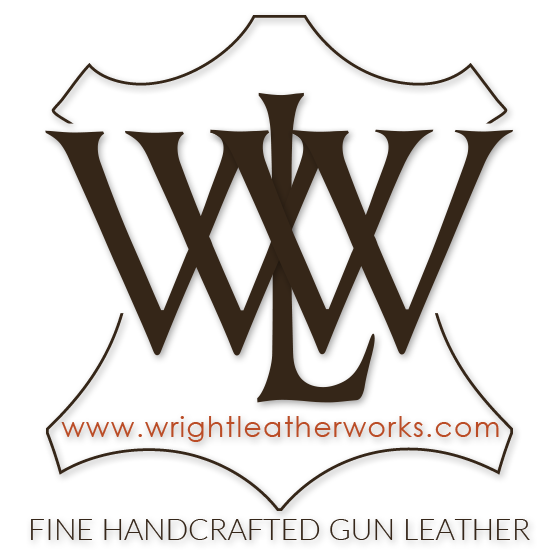
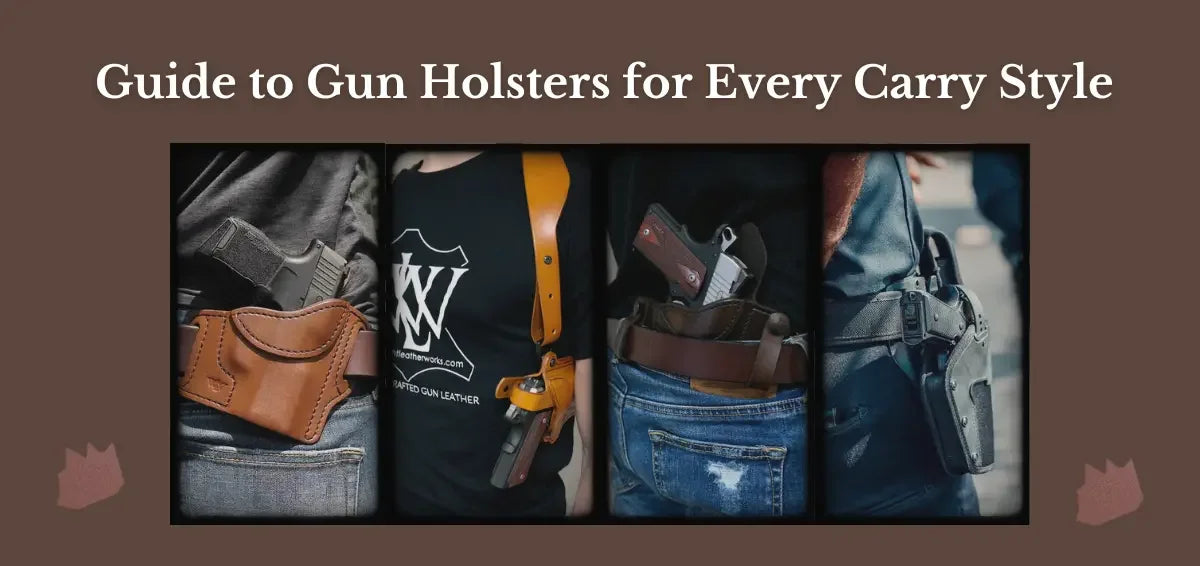
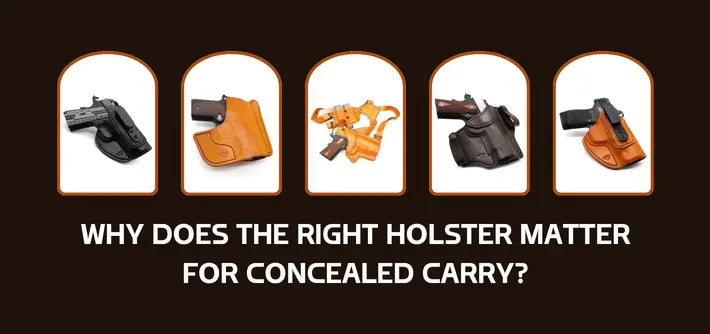
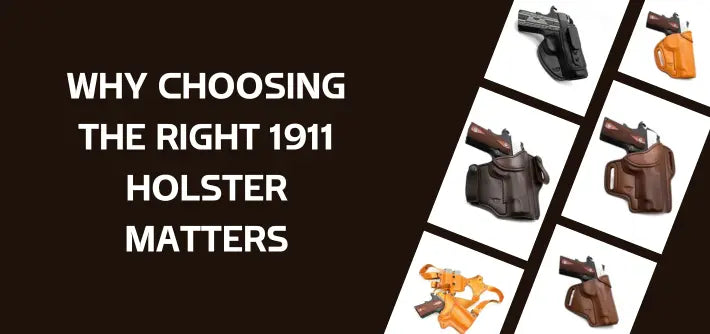
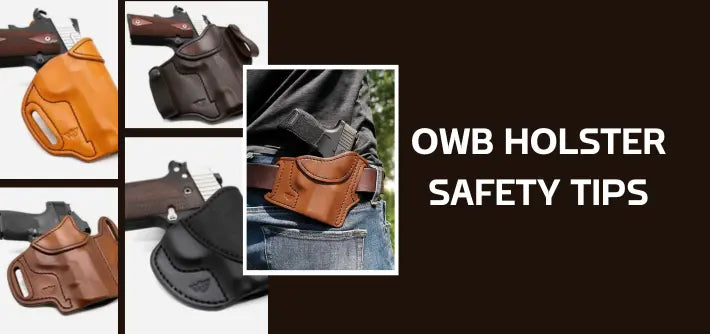
Leave a comment (all fields required)